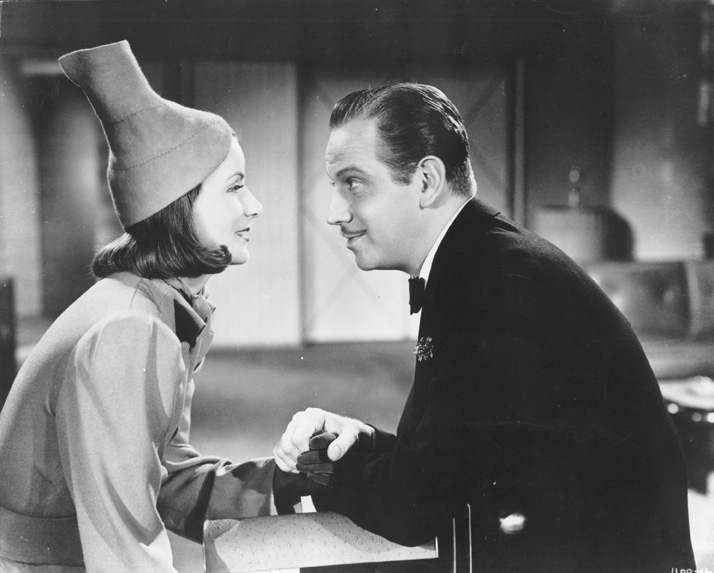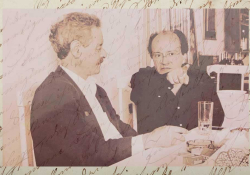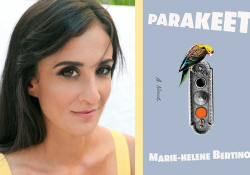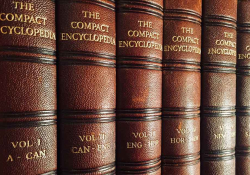Ninotchka on My Mind

Thanks to the marketplace and the “culture of consensus,” writes 2016 Neustadt Prize laureate Dubravka Ugrešić, “art has become our favorite theme park.” In place of fawning adoration, we should look to “madmen, hermits, heretics, dreamers, rebels, and skeptics” if we want to find true literature.
1.
Let’s take the freshest example for starters: Damien Chazelle’s La La Land (2016). Since its debut last year, the film has swept up all the awards it could possibly garner and earned all the millions it could earn. A thoroughly understandable mistake happened at the Oscars: because La La Land had won Oscars in so many other categories, no one doubted they would walk away with Best Film. So it was totally natural that word of their victory leaked out of the envelope and Faye Dunaway’s mouth when she misread the card, a mistake rectified a few minutes later: the Oscar for Best Film, 2017, went to Moonlight.
A Saturday Night Live clip, “La La Land Interrogation,” is making the YouTube rounds. It explains, in the pithiest and most eloquent fashion, the quintessence of the culture we have been building for years and within which we’re flailing about today as its losers or winners. A young man is brought into a police station who, without realizing he was being filmed by hidden cameras at a restaurant, had had the audacity to announce to his girlfriend his feeling that La La Land is not as good a movie as everybody claims it is. Two police officers rough up the poor skeptic and force him to say that La La Land is the perfect film.
2.
Ilf and Petrov are the authors of the satire How Robinson Was Created (Kak sozdavalsya Robinson, 1932), and those with digital savvy will be able to find a short film adaptation of the story on YouTube, directed by Eldar Ryazanov (1961). What is it about? The editorial board of a magazine has decided to attract young readers who are tired of texts written with a “slobbering earnestness,” so the editor turns to writer Moldovantsev to enliven the magazine with more lively material. The editor feels a new, Soviet version of Robinson Crusoe will fit the bill, and the writer, whether gladly or not, agrees. Then the editor heaps many unusual demands on the writer. After the shipwreck, Robinson is not alone when he crawls out of the ocean onto the desert island; with him are municipal government officials, including the secretary, and the desert island (which, for purposes of communication, had meanwhile become a peninsula) is soon settled by shipwrecked Soviet proletarian masses. This is, after all a Soviet Robinson, is it not?
The similarity between Eldar Ryazanov’s short film sketch and the Saturday Night Live video clip is astonishing. How could it be? The eras have nothing in common, nor do the systems and cultures; their contexts are distanced and very different. Ilf and Petrov’s story was published in 1932 and filmed in 1961, while the “La La Land Interrogation” video clip is a fresh parodic footnote to a film that played only a few months ago in movie theaters around the world. It behooves us to recall: the famous Kharkov congress was held in 1932, and the doctrine of socialist realism was embraced there and made official. The year of 1932 is usually taken as the beginning of Stalinism, an ideology soon to radically transform not only Soviet but other communist cultures for the next twenty-odd years. The short story by Ilf and Petrov (as well as their novels, The Little Golden Calf and The Twelve Chairs) has proven to be a powerful anticipation of what was to come. Yet how dare I link an SNL clip to a satirical story by Ilf and Petrov? Have I even checked to see what century we’re in?
3.
I ran into an acquaintance when I was in New York with whom I’d often had passionate conversations about literature.
“What did you think about that new book, XY?” he asked.
And before I could open my mouth, he said . . .
“It’s brilliant, don’t you think?”
“So it is,” said I, my heart sinking.
Why had my otherwise perceptive friend deliberately used a phrase that meant nothing, which could apply to just about anything, at any time, on any occasion? Suddenly it seemed that before me was standing not a person who had decided to respect the conventions of unwritten literary decorum but a homo sovieticus, homo duplex, a member of the majority humanoid species that, they say, was dominant during communist times, characterized by hypocrisy, a principled caution, a principled evasive sidestep around conflict and paranoia, not, of course, as a diagnosis but as a lifestyle. Conflict evasion was not only defensive in nature but also indicated a deep distrust of one’s own humanoid species. I responded in the affirmative, which only meant that any further conversation was pointless; both of us, of course, were lying and we’d go on lying.
Where does this strange, totally indefensible hypocrisy in people’s behavior spring from, that it is motivating and shaping the culture of our times, this culture that we could fairly term a culture of consensus?
Where does this strange, totally indefensible hypocrisy in people’s behavior spring from, that it is motivating and shaping the culture of our times, this culture that we could fairly term a culture of consensus? Does it come from fear? Will someone drag us down to a police station—like in that witty SNL sketch—if we admit we’re not as big a fan of Elena Ferrante’s writing as others seem to be? Have my American acquaintance and I, each on our own side of the world, each with different experiences, different ages, inhabited a culture to which, whether we like it or not, we have acquiesced? This culture of ours is ruled by money and, of course, consensus.
In such a constellation, to stand up and declare in public that La La Land is a bad movie is tantamount to social banishment, another form of suicide. Because many who participated in the production will jump to the defense of the value of the “product,” those who will be selling the product and earning money from it, those who are determined to see their investments coming back to them with a hundredfold return. The culture of consensus results from a powerful marketplace. Some who take part in the game will never profit from it financially.
There are, however, other kinds of profit to be had. Culture is a form of socialization. Literature, film, the visual arts, architecture, museums, opera, galleries are realms of socialization. The digital marketplace, the new digital genres (the social media), are powerful springs of the global marketplace. The digital age has cut drastically into the class aspect of culture. In communism, this was done through propaganda and communist cultural policies and praxis. Today the digital revolution has made the democratization of art possible. Culture today belongs to everyone, just as everyone, for better or for worse—thanks to the digital revolution—has the option of participating in culture.
Culture today belongs to everyone, just as everyone, for better or for worse—thanks to the digital revolution—has the option of participating in culture.
When I was flying to Zagreb, I learned from a fellow traveler that she was a math teacher from Singapore; she was traveling to Zagreb with two of her friends (Zagreb is in Croatia, right?) so they could visit the Museum of Broken Relationships, and I realized how dangerous and difficult it would have been to tell her that the Museum of Broken Relationships is, perhaps, not the most exciting tourist attraction to be found in this part of Europe. Armed with their iPhones, the three young women from Singapore are children of the culture of consensus even if they have no clue about it. And having no clue is, indeed, the foundation on which the culture of consensus stands.

A still from Ninotchka, starring Greta Garbo and Melvyn Douglas
In the classic comedy Ninotchka (1939), a young Soviet woman rejects the whole communist ideological package, not so much out of love for debonair Leon d’Algout as out of fascination for a famous cone-shaped hat. In the ideological battle between communism and capitalism, the cone-shaped hat wins, at least as far as Ninotchka is concerned.
We are not as naïve as she, we have not succumbed to a mere fashion detail, we have deliberately embraced a brand-new, powerful, profound form of hypocrisy. We are participants, creators, and consumers of the modern culture of consensus. Having slipped in through the back door, the culture of consensus is quietly inching into our lives with the firm intention of staying here for a very long time. We live today surrounded by an orderly but unexciting cultural environment from which the dangerous, disturbing forms of cultural life have all but disappeared: individual opinion, imagination, sincerity, intuition, polemics, subversive (genuinely subversive) artistic gestures, authenticity, stamina, rebellion, embrace of personal risk. . . . According to Yevgeny Zamyatin’s famous words (in a letter to Stalin), “true literature” can exist only where it is created, not by diligent and trustworthy functionaries, but by “madmen, hermits, heretics, dreamers, rebels, and skeptics.”
This bears repeating: true literature is created by madmen, hermits, heretics, dreamers, rebels, and skeptics. Literature today (if we’re speaking of literature) is in the hands of the “diligent and reliable clerks,” the muscle-bound jotters of countless pages, the canny negotiators and self-promoters, the authors who believe their literary efforts to be healing, only because their books sell like the holy host. Literature today is in the hands of authors whose novelistic characters are not capable of writing a grammatically correct email or truly engaging in sadomasochistic games (although they insist on both), yet these authors persist in proudly foisting their tiresome lack of literacy on one volume after another, in all the shades of gray. Literature, today, is in the hands of writers who surf as if they are freethinking, intercultural, and global, and in their novels American housewives rush off to Europe to fall in love with ersatz Sufist instructors. Literature today is in the hands of writers who have dug their heels in to tell us the story of the Holocaust through the mouths of stuffed animals, all with the intention of shaking up our supposedly stupefied imagination and summon us to our moral responsibility.
4.
The mighty marketplace—which not only rules the culture of our time but is the culture of our time—neuters every artistic effort, doing this with everything, and so with the Russian avant-garde (and European modernism). The marketplace has neutered the culture of avant-garde resistance, commodifying it, just as it has commodified Stalin and Stalinism. Hence the executor and his victims find themselves displayed on the same market-stall countertop, for sale in the same basket, losing their differences, while along the way losing the notion of art as a site of resistance, of the dynamics of art, of jettisoning the ossified forms from the steamship of modernity, of taking personal risk, of art as resurrection of the word, of art as estrangement, of art as revolution, of art which will be a slap in the face of public taste, which will change the world, and otherwise there will be no art.
The last mass trials were a great success. There are going to be fewer but better Russians, says Ninotchka at one point. The Russians, of course, did not become better. There were just fewer of them. And then fewer still. The Russian revolutionary culture of defiance, the Russian avant-garde, was crushed by Stalinism. Literally so: they say that some million and a half writers, artists, and thinkers were murdered in the Stalinist camps. After rehabilitation, the Russian avant-garde began its second, gradual, quiet death. This time the executor did not sport bushy whiskers. Death came in the form of the democratic, free, shiny, seductive marketplace.
5.
The entire culture of artistic subversion of the marketplace has been, with our blessing, reduced to quotes. Quotes are like household pets vying for our attention: coffee-mug quotes from Joyce’s Ulysses, T-shirt images of Duchamp’s famous Fountain. Malevich’s Sportsmen molded in papier-mâché to make souvenir dolls in various sizes, from those that can be held in the palm of the hand to garden-sized statues. The marketplace has turned us, with our permission, into an educated mob adoring art. Art has become our favorite theme park.
According to Yevgeny Zamyatin’s famous words, “true literature” can exist only where it is created by madmen, hermits, heretics, dreamers, rebels, and skeptics.
And so it is that we have found ourselves on an assembly line of stripped-down, insatiable, and unstoppable production, with our awareness erased of the continuity and purpose of our efforts. We don’t know what century we’re in, nor do we hurry to name it. The age of postmodernism still defends a historical continuity, relying on strategies of homage, borrowing, parody, and reconstruction, to name a few. Today the only form of maintaining the literary-historical continuity is, metaphorically speaking, the act of copying. So what? Are we not living at the end of history? Who even cares about continuity? The culture of the digital age evokes a chaotic mishmash of multiple, random “borrowings.” The copying and rewriting herald the end of all art. Perhaps for that very reason, in our presentiment of the end, we declare everything brilliant: Ferrante is brilliant (to be fair, we can celebrate a woman writer finally earning the brilliance moniker; until now the self-proclaimed male defenders of the canon have had a monopoly on brilliance!), Knausgaard is brilliant, and La La Land is brilliant. . . . No one dares to disagree. And if they did, who would even care?
We are witness to frequent collective and global crazes. All it takes is for someone famous to douse themselves with a bucket of ice water in the name of some charity, and suddenly the ice bucket challenge sweeps the world like a tsunami, with celebrities and ordinary people dousing themselves with ice, though most have no clue why. Everyone else is doing it, the whole world, and that’s enough. If this is so, if we are all carriers of a dominant imitative gene, if the gene responsible for our imitative capacities exists in all of us, if, moreover, it typifies us humans, then we are susceptible as a species to manipulation: all Hitler need do is scratch his ear, and most of us will scratch ours without realizing that by scratching his ears Hitler has signaled to his guards to switch on the gas chambers and our scratching of ears has given him consensus.
If it took only a few years to convince most of the people living in the former Yugoslavia that they were living differently than they had, in fact, been living, to persuade them that the history they recalled was not, in fact, their true history, that their friendly neighbor had never, in fact, been friendly, and if all this was done not to right historical wrongs but to make someone filthy rich, won’t the same laws govern other realms of human interest? How can we believe that our aesthetic criteria are ruled by pure taste and not by something else? Is not the buying of a book that millions of other readers have bought before us the same as dousing ourselves with a bucket of ice?
In both cases we have no clue as to why we do it, but we’re prepared to defend our action to the death. In fact, the less we know about how we make decisions, the more prepared we are to defend them. Perhaps our literary-aesthetic values are foisted upon us, maybe this is why La La Land is the most brilliant musical film in the world.
6.
With a New York acquaintance, I went to see Julian Rosefeldt’s Manifesto, with Cate Blanchett in the lead and only role. The unsurpassed Blanchett with her stage presence, masks, and acting emptied the manifestos she was performing of their vibrancy and impact. Shot in the style of sophisticated black-and-white Calvin Klein ads, the movie is devoted “to all the marvelous authors of these mind-blowing manifestos.” As we left the theater I was proud of my friend: he didn’t miss a beat, he resisted being sucked in, and it was hard not to get sucked in. Because everyone was. His sense of being hypnotized by fear at possible social exclusion was only fleeting. We walked home slowly, chastened. There wasn’t much to say. We’d attended a brilliantly organized cultural funeral. The director of the movie forced us to pay lip service to the culture of the manifesto. I mused on the tragedy of these two deaths. Many masters of the Russian avant-garde died twice: first, when they were put to death by Stalinism, and second, in our glorious artistic age, by the culture of consensus.
I said goodbye to my friend, and on my way to the subway station I sat for a moment on a bench in a miniature park at the intersection of West Houston and Sixth Avenue. Manhattan was awash in sunlight. An elderly woman sat down beside me, having parked a metal shopping cart next to the bench. The cart was overflowing with trash. Or so it seemed at first. Upon closer inspection I began to be able to distinguish among the things in the cart: San Pellegrino empties, Heineken cans, two empty Martinazzi bottles, and a heap of Macy’s paper bags. The old lady was, apparently, senile or simply playing at senility in order to avoid vexing conversations. In my vision, focused on the contents of the old woman’s shopping cart, five-pointed red stars suddenly glowed.
My visual sensitivity to the five-pointed red star is understandable. In Croatia, the former Yugoslav republic where I was born, now an independent member of the European Union, the final battle is being waged between banning the red star and fully destigmatizing the swastika. The swastika is winning. With the fall of communism and the advent of democracy, the red star was expunged from the Croatian visual field, to be replaced by swastikas, black and swarming like cockroaches. This old woman on the bench beside me had forgotten, or she seemed to have forgotten, why she was collecting the red stars, but her appreciation of the beauty of the design was intact. Ninotchka?! Could this woman possibly be? No, sadly she was not Ninotchka, this was merely the moment of a brilliant deficit of artistic imagination that came over me on a bench in a New York park, in the month of May of the year 2017.
Translation from the Croatian
By Ellen Elias-Bursać












